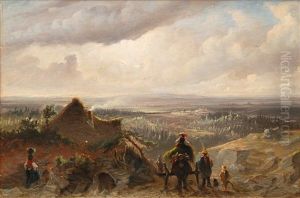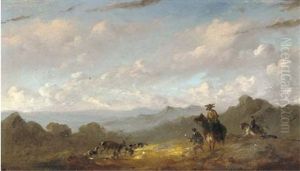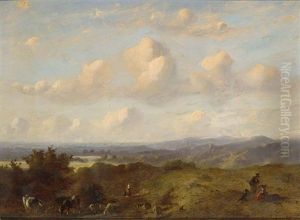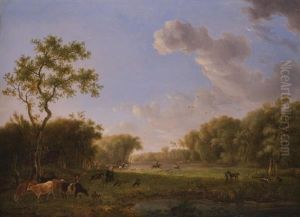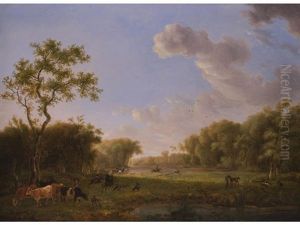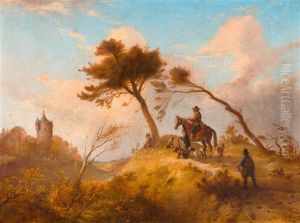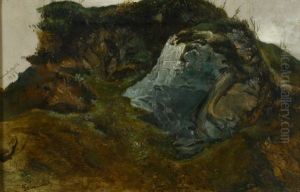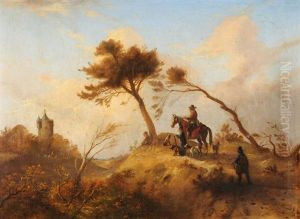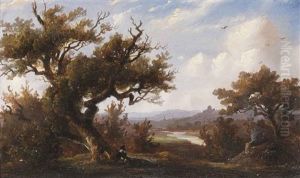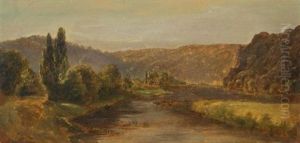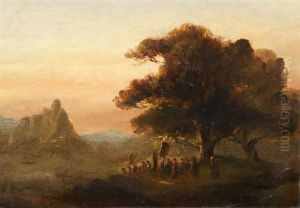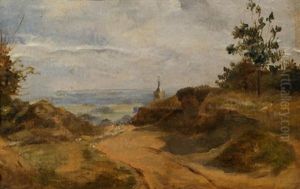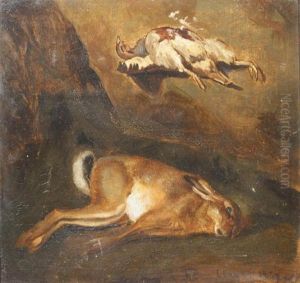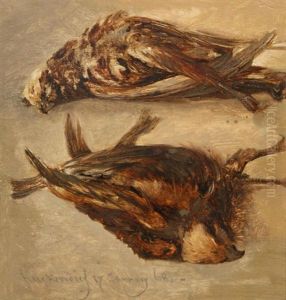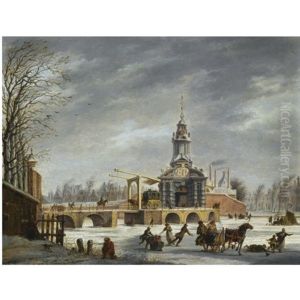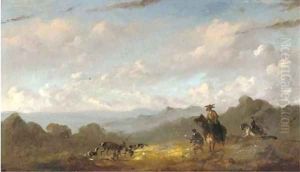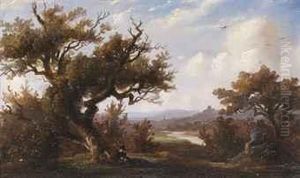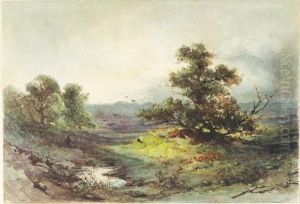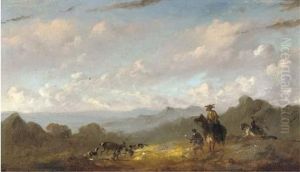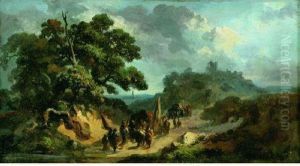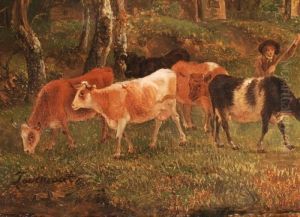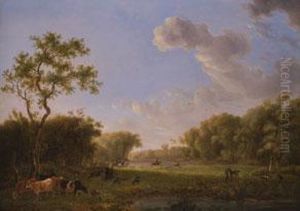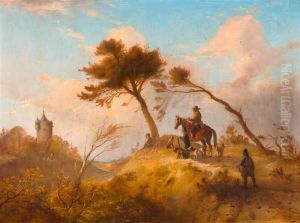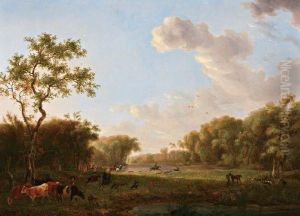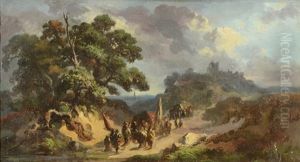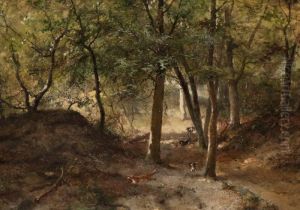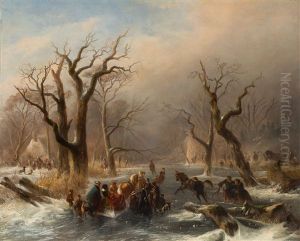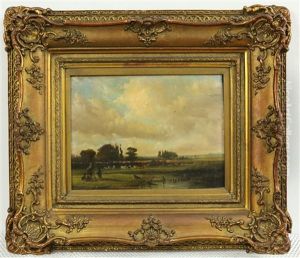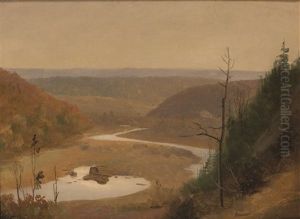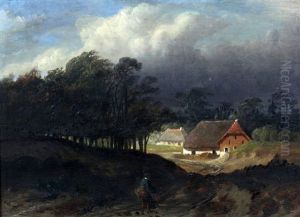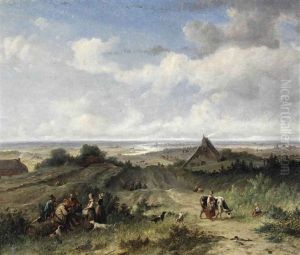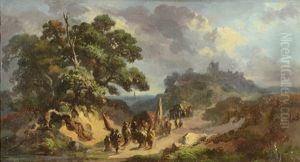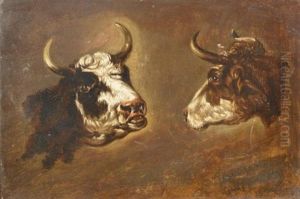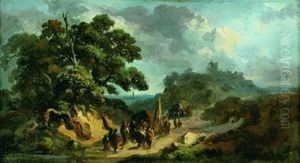Johannes Tavenraat Paintings
Johannes Tavenraat was a Dutch painter born on March 28, 1809, in Rotterdam, Netherlands. He specialized in landscapes and animal scenes, often depicting the forested areas and the wildlife of the Netherlands and Germany. Tavenraat received his initial artistic training from his father, who was also a painter. He further developed his skills under the guidance of the artist J. van Ravenzwaay.
In the early stages of his career, Tavenraat's work was influenced by the Dutch Romantic school of painting, which was characterized by a strong emphasis on the beauty and power of nature. He often ventured out into natural settings to find inspiration, capturing the play of light and shadow in his compositions.
Throughout his lifetime, Tavenraat exhibited his work in various Dutch cities, including Amsterdam and The Hague, gaining a respectable reputation for his detailed and atmospheric landscapes. His paintings were well-received by critics and art lovers alike, who praised his ability to evoke the mood of the natural scenes he portrayed.
In the mid-19th century, Tavenraat traveled to Germany, where he spent time in the forests of Westphalia, a region known for its picturesque beauty. This period was particularly productive for him, resulting in a number of works that showcased his maturing style and technical proficiency. His paintings from this period are often noted for their realism and the artist's skill in rendering textures and nuances of the forest.
Johannes Tavenraat continued to work and exhibit his art throughout his life. His contribution to Dutch landscape painting has been recognized as part of the Romantic tradition that celebrated the sublime in nature. Tavenraat passed away on April 18, 1881, in Rotterdam. His works remain in several Dutch museums and continue to be appreciated by art historians and collectors for their depiction of the natural world and the Romantic spirit of the 19th century.
